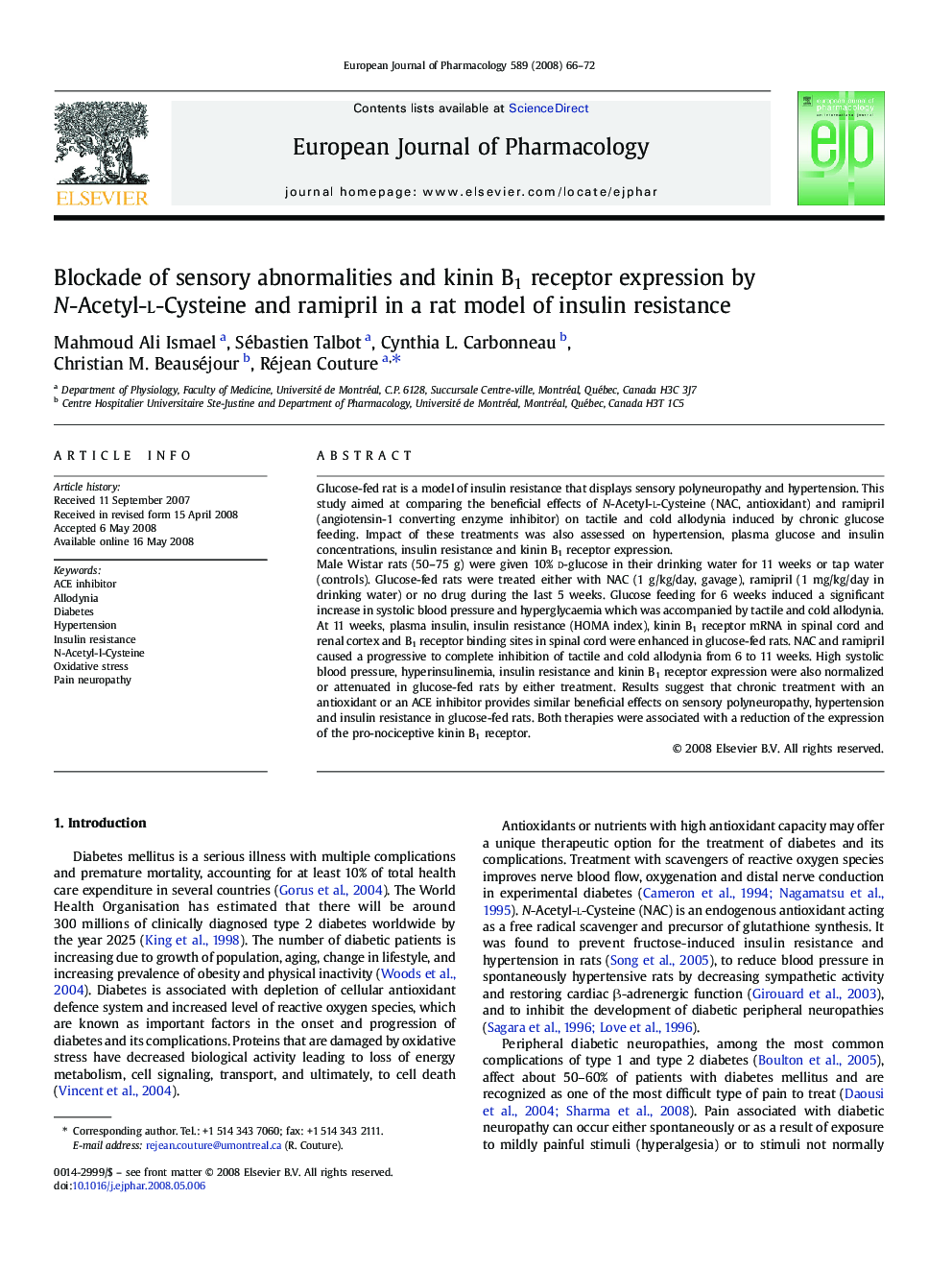| Article ID | Journal | Published Year | Pages | File Type |
|---|---|---|---|---|
| 2535092 | European Journal of Pharmacology | 2008 | 7 Pages |
Abstract
Male Wistar rats (50-75Â g) were given 10% d-glucose in their drinking water for 11Â weeks or tap water (controls). Glucose-fed rats were treated either with NAC (1Â g/kg/day, gavage), ramipril (1Â mg/kg/day in drinking water) or no drug during the last 5Â weeks. Glucose feeding for 6Â weeks induced a significant increase in systolic blood pressure and hyperglycaemia which was accompanied by tactile and cold allodynia. At 11Â weeks, plasma insulin, insulin resistance (HOMA index), kinin B1 receptor mRNA in spinal cord and renal cortex and B1 receptor binding sites in spinal cord were enhanced in glucose-fed rats. NAC and ramipril caused a progressive to complete inhibition of tactile and cold allodynia from 6 to 11Â weeks. High systolic blood pressure, hyperinsulinemia, insulin resistance and kinin B1 receptor expression were also normalized or attenuated in glucose-fed rats by either treatment. Results suggest that chronic treatment with an antioxidant or an ACE inhibitor provides similar beneficial effects on sensory polyneuropathy, hypertension and insulin resistance in glucose-fed rats. Both therapies were associated with a reduction of the expression of the pro-nociceptive kinin B1 receptor.
Keywords
Related Topics
Life Sciences
Neuroscience
Cellular and Molecular Neuroscience
Authors
Mahmoud Ali Ismael, Sébastien Talbot, Cynthia L. Carbonneau, Christian M. Beauséjour, Réjean Couture,
